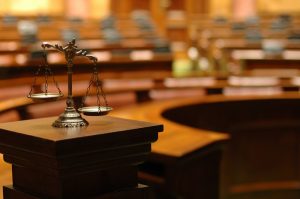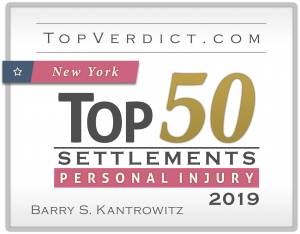 How can you prove in a court of law or in negotiations with an insurance carrier that your injury in a car crash, slip and fall or other accident was caused by another party’s negligence?
How can you prove in a court of law or in negotiations with an insurance carrier that your injury in a car crash, slip and fall or other accident was caused by another party’s negligence?
To determine whether a actionable claim for compensation exists, prospective plaintiffs can review the essential elements of personal injury cases in New York and New Jersey.
Negligence: the keystone of personal injury claims
Any of several facets of the theory of negligence may prove relevant to your personal injury claim.
Existence of a duty
Did the party thought to be responsible owe a particular legal duty to the victim? This is fairly easy to establish when the relationship between the parties is a formalized one, such as in the case of doctors and patients. However, in many other contexts, a general duty of reasonable care with regard to other citizens exists, including the duty of care owed by one motorist to all others. Once a duty is found to have been present, it is necessary to explore the remaining elements of negligence.
Demonstrable breach
If it is clear that the allegedly responsible party owed a duty to the claimant, it is important to be able to show that a breach of that duty occurred. If it is established that there was no adherence to a standard of reasonable care under the circumstances or to a more defined standard of care such as in a medical treatment context, the inquiry will move to the next essential element of negligence.
Making the causal link
Once it has been shown that not only did a duty exist, but that it was also concretely breached, an experienced personal injury attorney will have to establish a causal link to show that the failure to meet the applicable standard of care did in fact cause the harm sustained. Sheer negligence on its own will not give rise to a claim unless it also causes injuries. Whether the harm experienced was a reasonably foreseeable consequence of the negligent acts or omission often factors greatly in assignment of legal responsibility.
Key questions of valuation
Finally, the ability to obtain fair compensation in a personal injury matter will depend greatly on a claimant’s ability to establish the type and value of the losses stemming from the negligence at issue. Whether this category encompasses medical expenses, damage to property, emotional distress, physical pain, lost wages or reduced future earning capacity, it is vital that a plaintiff enlist the help of experts and economic loss professionals able to specifically quantify losses and remove such questions from the realm of vague speculation.
Recoverable damages in New York and New Jersey
As is the case in jurisdictions across the country, New York and New Jersey have their own distinctive rules for financial recovery in personal injury matters. New York is considered to have a pure comparative negligence system. This provides that regardless of a plaintiff’s share of responsibility for the injuries he or she has suffered, recovery is not barred. Available damages will simply be reduced by the amount of negligence attributed to the claimant. New Jersey, on the other hand, employs a modified system of comparative fault in which a plaintiff will be unable to recover damages if his or her own responsibility is assessed to be greater than that of the parties targeted in the lawsuit.
Advocating for personal injury victims since 1975
The personal injury attorneys of Kantrowitz, Goldhamer & Graifman understand the tumultuous after-effects of a serious accident and are committed to pursuing accountability and compensation for every client we serve. Working with medical experts, economic loss analysts, accident reconstruction professionals and support staff, we explore all angles of your case so that the elements of negligence can be thoroughly demonstrated. If you are interested in receiving a confidential consultation in our Rockland County, NY or Bergen County, NJ office, we invite you to call today.
Additional “proving negligence in a personal injury lawsuit” resources
- New York State Legislature, New York Civil Practice Law and Rules §1411, http://public.leginfo.state.ny.us/lawssrch.cgi?NVLWO:
- New Jersey Legislature, New Jersey Permanent Statutes Database – 2A:15-5.1; 2A:15-5.2; 2A:15-5.3, http://lis.njleg.state.nj.us/cgi-bin/om_isapi.dll?clientID=23666327&Depth=2&depth=2&expandheadings=on&headingswithhits=on&hitsperheading=on&infobase=statutes.nfo&record={31A}&softpage=Doc_Frame_PG42






